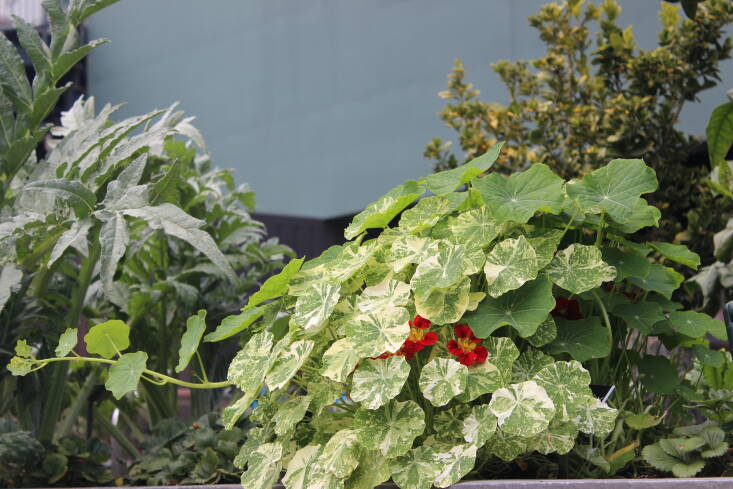Perhaps you’ve seen the initials “IPM” used by your CSA or at the local farmers’ market. What does it mean and why does it matter? Below, we explain what it is and how you can utilize it in your own home garden.
What does IPM stand for?

IPM is short for Integrated Pest Management. It is a philosophy of pest management that attempts to also do the least amount of harm to the environment. IPM is a continuous, ecosystem process that seeks to let nature do as much of the work as possible for long-term pest control. It will require a bit more work at the beginning of the season to start but gets easier as the season, and the years, go on.
Isn’t this just organic gardening?
IPM is not organic gardening, since synthetic pesticides are allowed, but it can incorporate organic methods and controls. IPM shares the tenets of organic gardening in the belief that healthy soil, the proper amount of sun and water, and the right plant in the right place all make for a healthier ecosystem. It’s a more measured process, though, that takes into account the size of the problem. The main goal of IPM is not to remove all pests and diseases, but to work with nature to attract beneficial helpers, decrease diseases, and to deter pests (including the four-legged variety).
What are the IPM methods?

There are four main methods of controlling pests and diseases in IPM.
- Biological controls that bring in natural predators and deter pests. These are plants that attract and deter pests. (See Trap Crops: The Best Plants to Grow to Keep Pests Away from Your Vegetables.)
- Cultural controls that reduce the need for treatment by creating an environment that promotes plant health and deters pests and diseases. These include choosing disease-resistant hybrids, companion planting, debris removal, and not overwatering.
- Mechanical controls such as picking pests by hand, knocking off pests with a strong stream of water, or adding physical barriers like row covers.
- Chemical controls that start with the least toxic pesticide option in conjunction with the above three methods. Pesticides are used only when needed and when the other methods fail to bring down pests to a reasonable level. They are selected to do the least amount of harm to non-target organisms, including people, beneficial insects, and the environment.
How do you apply IPM in your own garden?

Choose plants that can deter pests or attract beneficial helpers. Garlic and onions planted around the perimeter of the garden bed will deter rabbits. Strongly scented herbs like rosemary and basil can repel certain beetles and flies. Native flowers in your garden bed can attract pollinators and predatory beneficial wasps. Dill and tansy attract ladybugs that eat aphids. Opt for hybrids that are resistant to diseases, such as Rutgers Devotion DMR basil that is resistant to downy mildew. Healthy plants fight off pests and diseases easier than weak or stressed plants.

Inspect your garden every day (or at least every other day) during the growing season for pests and disease. Identify what they are and what problem they are causing. Finding a problem early makes it easier to solve. A small infestation may not need treatment. It may just need to be found by the good bugs. Give it a couple of days to see what happens. Or if you find one hornworm on your tomatoes, you can just pluck it off. Problem solved. But if you accidentally knock into your tomatoes and a cloud of whiteflies erupts, then you have a bigger problem.
Select your control to match the problem, starting with the least toxic first. Hand picking pests off plants may make you a bit squeamish, but it’s nontoxic and doesn’t harm anything but the tomato hornworm. (Leave it if it has what looks like eggs on its back. That’s the work of a small braconid wasp, Cotesia congregata, and it will take care of the hornworm for you.) Whiteflies may be able to be knocked off with a strong stream of water from a hose. You can protect your cucumber seedlings from cutworms by placing a toilet paper tube over the seedling.

If you have to use chemical controls, use them sparingly and specifically. Pick the least toxic option, such as insecticidal soap or neem oil, first. Always read the directions before every use and follow them exactly.
Monitor the results and situation. Is your choice of method working? Remember, the goal is not to completely remove the pest, since that forces the ecosystem out of balance. The goal is to bring the level of damage under control to a reasonable level with the minimum harm to the environment.
See also:
- The Garden Decoder: What Is ‘Companion Planting’?
- Homemade Garden Remedies: 5 Natural Solutions for Healthier Soil and Plants
- Ask the Expert: Why You Should Welcome Wasps Into Your Garden












Have a Question or Comment About This Post?
Join the conversation